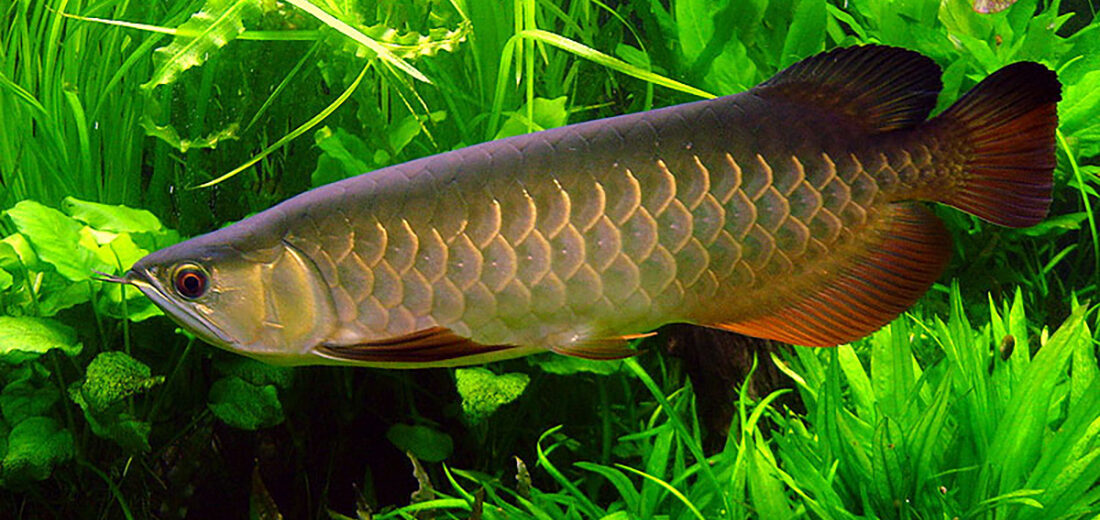
Considered lucky by many Asian cultures, the Asian arowana, aka dragonfish, is a native to southeast Asia. More specifically Cambodia, Indonesia, Malaysia, Thailand, and Vietnam. They prefer slow moving, black water rivers as well as forested wetlands and swamps. These dragonfish have survived for more than 140 million years. They are thought to be lucky due to their resemblance to dragons, a symbol of good fortune in Asian cultures. Due to overfishing, pollution, poaching, and habitat loss, these beautiful living dinosaurs are listed as Endangered by the IUCN.
First the Stats…
Scientific name: Scleropages formosus
Weight: Up to 15.4 lbs.
Length: Up to 3 feet
Lifespan: Up to 60+ years
Now on to the Facts!
1.) Arowanas prey on insects, frogs, lizards, snakes, spiders, birds, bats, and other fish.
2.) Birds, larger fish, and crocodiles all prey on arowanas.
3.) Asian communities believe that these fish are able to increase the health within a generation, cause a gain in wealth, and remove negative energy.
4.) There are several color varieties of the arowana: green, silver Asian, red-tailed golden, gold crossback, blue Malayan, Bukit Merah blue, and the super-red.
5.) The arowana is an aggressive fish that diligently guards its territory.
But wait, there’s more on the Asian arowana!
6.) One of the ways to tell a male apart from a female is the males have a larger and deeper mouth for mouth brooding.
7.) After the 20 – 90 eggs are laid, the male will scoop them up in his mouth and incubate them till they hatch. This is called mouth brooding. The fry then stick around in dad’s mouth for another 2 – 3 months, till their yolk sacs have been completely absorbed and they finally get evicted.
Did you know…?
When they spot prey on branches, above the water, they have been documented leaping up to 5 feet out of the water to catch said prey.
8.) Arowanas can sell, in the aquarium trade, for up to $200,000+ per fish!
Now a Short Asian Arowana Video!
Also, check out the Critter Science YouTube channel. Videos added frequently!
Want to suggest a critter for me to write about? Let me know here.



